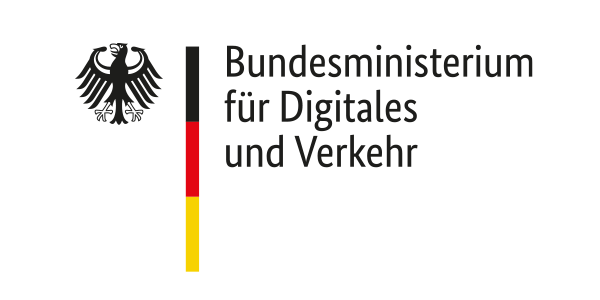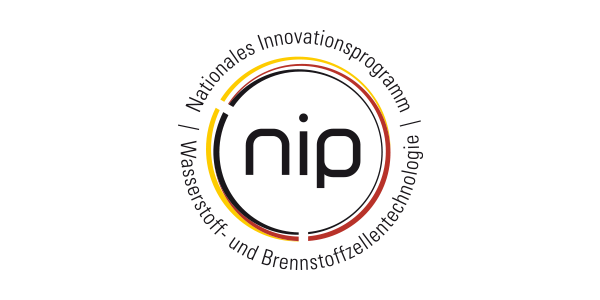FAQ
Allgemeine Informationen
In einer Brennstoffzelle reagiert ein kontinuierlich zugeführter Brennstoff (zum Beispiel Wasserstoff aus Erdgas) mit einem Oxidationsmittel (wie Sauerstoff aus Luft). Dabei entstehen Wasser, Strom und Wärme. Diese elektrochemische Reaktion wird auch als „kalte Verbrennung“ bezeichnet und ist besonders effizient. Es handelt sich quasi um die Umkehrung der Elektrolyse.
Brennstoffzellen besitzen eine Reihe von Vorteilen gegenüber konventionellen Antrieben:
- In- und Outdoorbetrieb (auch bei Extremtemperaturen wie in Kühlräumen)
- emissionsfrei und leise
- geringer Flächenbedarf für die Infrastruktur
- hohe Effizienz
- sehr flexibel (modular, skalierbar)
- schnelle Betankung
- sehr zuverlässig, robust, wartungsarm und lange Lebensdauer
- konstante Leistungsabgabe
Wasserstoff selbst ist zwar explosiv, aber leicht und flüchtig. Im Vergleich zu flüssigen Brennstoffen oder auch Batterien stelle das Gas daher keine grundsätzlich höhere Gefahr dar.
Wird als Energieträger Wasserstoff aus erneuerbaren Quellen eingesetzt, ist ein weitgehend emissionsfreier Betrieb der Brennstoffzellen möglich, bei dem lediglich Wasserdampf emittiert wird.
Werden Diesel oder Erdgas als Treibstoffe verwendet, können die Emissionen zum einen wegen der höheren Effizienz der Anlagen gegenüber herkömmlichen Antriebssystemen und zum anderen wegen der günstigeren Emissionsbilanz deutlich reduziert werden.
Wissen Sie?
... nur eine anderere Art von Elektro-Fahrzeugen.
... Zero-Emission Fahrzeuge.
... benutzen Brennstoffzellen, sowohl in der Intralogistik als auch für Backup power.
... können Brennstoffzellen-PKW bis zu 600 km fahren, ohne Leistungsverlust. Die Betankung dauert, wie bei einer konventionellen Betankung, nur wenige Minuten.
... bei der Stromerzeugung mit Brennstoffzellen sind Wärme und Wasserdampf.
... aus fossilen (bis 50% weniger Emissionen) als auch aus erneuerbaren Energiequellen gewonnen werden (Zero-Emission).
... ist das Eisen (Fe), gefolgt von Sauerstoff (O2) und dann Wasserstoff (H2). Im Universum ist der Wasserstoff das häufigste Element.
Videos
BMW Leipzig Plant: Hydrogen Fuel Cell Adoption

Mit dem Laden des Videos akzeptieren Sie die Datenschutzerklärung von YouTube.
Mehr erfahren
STILL-Video: Carrefour Hydrogen-Fleet (137 trucks)

Mit dem Laden des Videos akzeptieren Sie die Datenschutzerklärung von YouTube.
Mehr erfahren
Plug Power: Hydrogen Solutions Elevating Facility Efficiency

Mit dem Laden des Videos akzeptieren Sie die Datenschutzerklärung von YouTube.
Mehr erfahren

Mit dem Laden des Videos akzeptieren Sie die Datenschutzerklärung von YouTube.
Mehr erfahren

Mit dem Laden des Videos akzeptieren Sie die Datenschutzerklärung von YouTube.
Mehr erfahren

Mit dem Laden des Videos akzeptieren Sie die Datenschutzerklärung von YouTube.
Mehr erfahren

Mit dem Laden des Videos akzeptieren Sie die Datenschutzerklärung von YouTube.
Mehr erfahren
Leitfaden und Informationsmaterial
CIN-Broschüre : Grüne Logistik, Brennstoffzellen-Antrieb & Wasserstoff-Infrastruktur.
Hydrogen solution for material handling vehicles, Air Liquide.
Das Herz der Brennstoffzelle: Heraeus Fuel Cells entwickelt neue Materialien und Elektroden-systeme für elektrische Antriebe der Zukunft.



